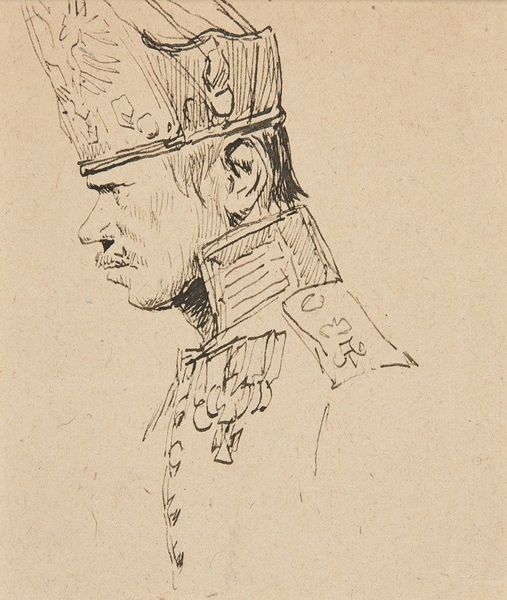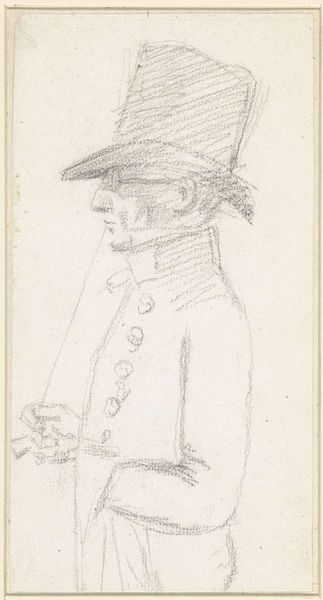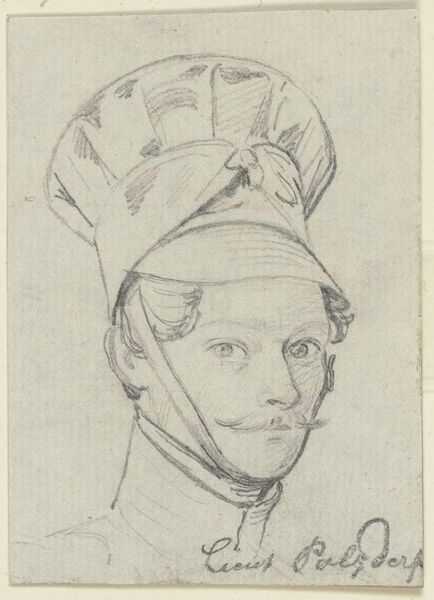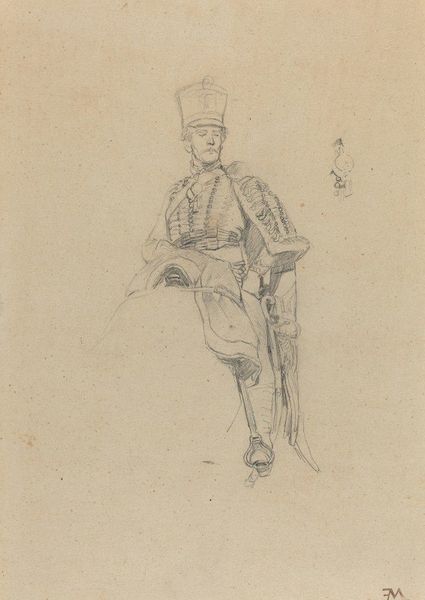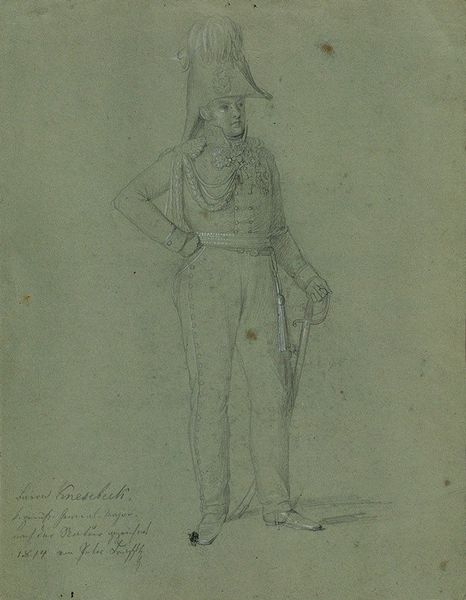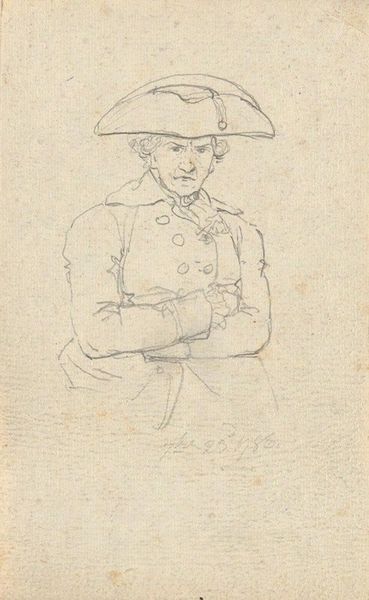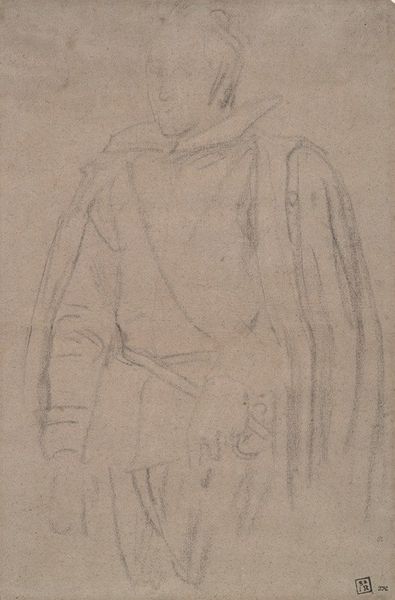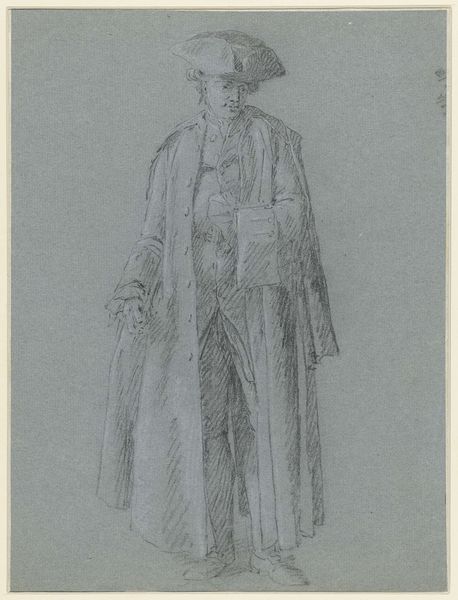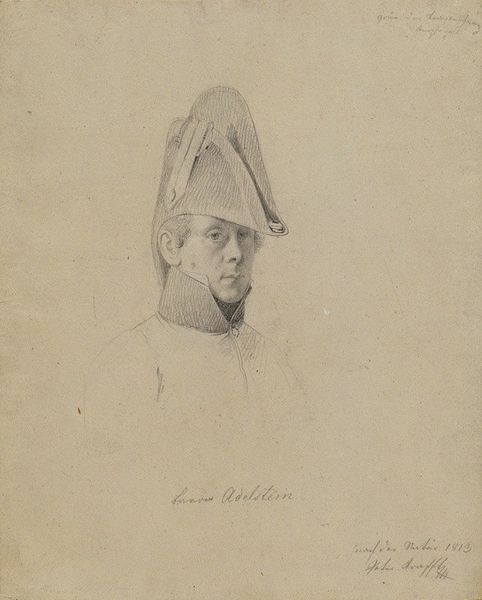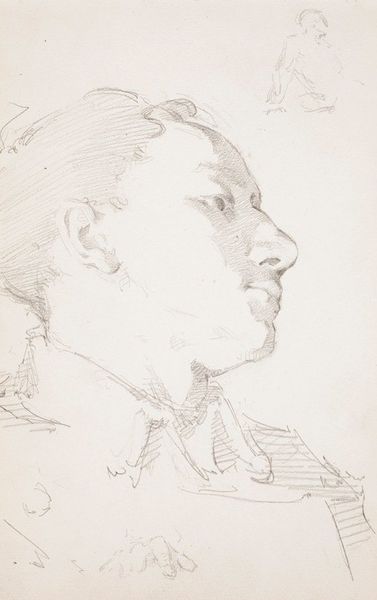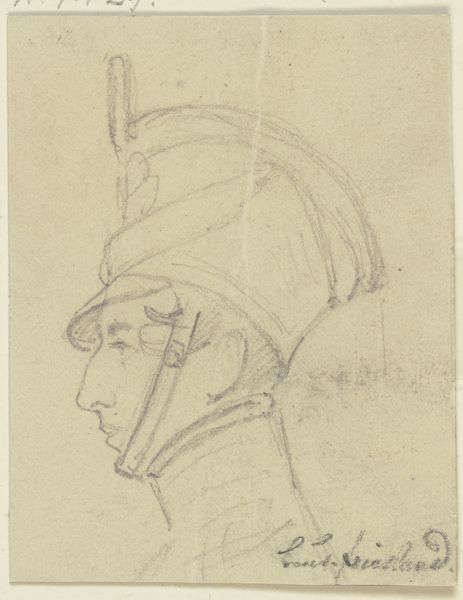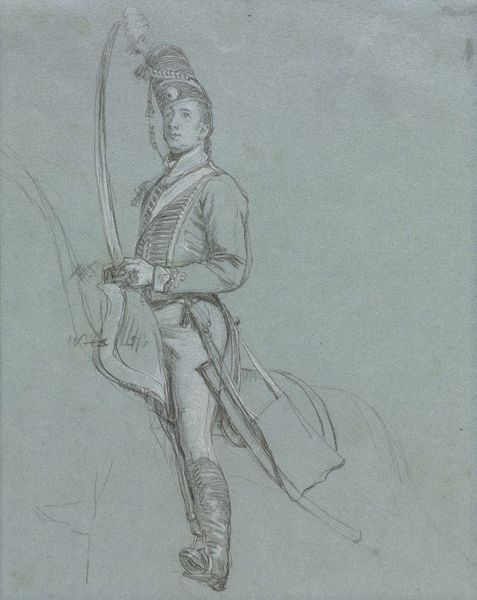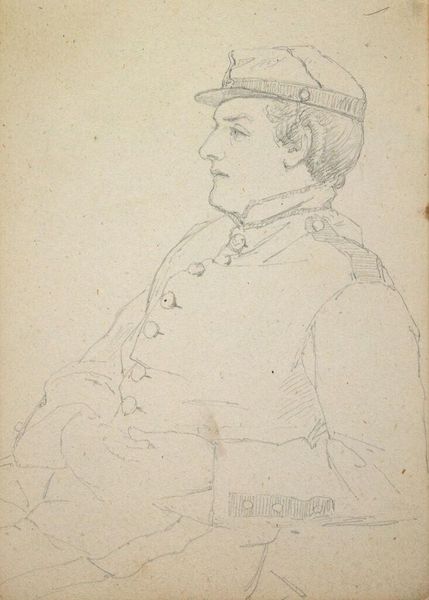
drawing, pencil
#
portrait
#
drawing
#
neoclacissism
#
pencil sketch
#
pencil
#
portrait drawing
#
academic-art
Copyright: Public Domain: Artvee
Curator: Standing before us, we have Johann Peter Krafft's 1814 portrait of Freiherr von Knesebeck, rendered meticulously in pencil. Editor: The initial impact is quite striking. There's a real intensity in his gaze, a firm resolve. However, it is softened somewhat by the almost ephemeral quality of the pencil lines. Curator: Exactly, that tension is compelling. Krafft produced this drawing during a period of intense political upheaval in Europe, marked by the Napoleonic Wars. Knesebeck himself was a significant figure, a Prussian Generalmajor involved in crucial military strategies of the time. We can't divorce this image from its militaristic and political context. Editor: And the symbols… his hat is absolutely loaded! The elaborate plumes, the rosette… They speak volumes about status, power, and perhaps even national identity. I wonder what those ornaments would have represented to viewers at the time? There's a codified language there, of belonging and rank. Curator: Without question. Knesebeck's identity as an aristocrat and a military leader are both emphatically constructed through these sartorial symbols. Krafft's neoclassical style lends further weight, drawing upon historical precedents to emphasize the sitter's nobility. I want to consider the socio-political ramifications of creating images like these in times of war and occupation. Whose stories are celebrated, and whose are deliberately obscured? Editor: The hat and those accoutrements act as potent signifiers, as statements of power during an era of enormous societal flux. Think about how portraiture, with its attendant symbols and conventions, serves to build lasting images that influence our own understanding. Curator: So, it asks us to grapple with these visual representations and decode them to expose hidden narratives. Editor: Precisely! By attending to even seemingly superficial visual cues like the ones presented here, we unearth significant insights into our understanding of power and the construction of cultural memory. Curator: Indeed, by looking into the political ramifications we see not just portraiture, but also how individual pieces represent broader power structures and historical moments. Editor: It goes to show that every mark, every choice, and symbol resonates with cultural meaning across time.
Comments
No comments
Be the first to comment and join the conversation on the ultimate creative platform.
